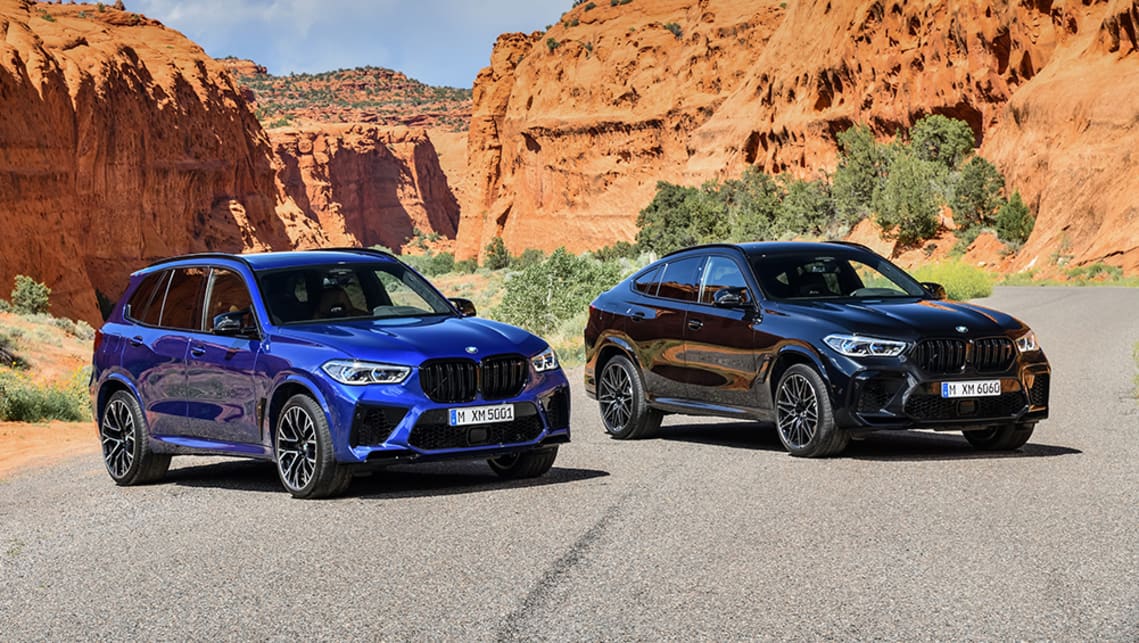Your cart is currently empty!

New BMW X5 M and X6 M 2020 pricing and specs detailed: 460kW V8 SUVs take it to the Competition
BMW Australia has announced pricing and specification for the new-generation X5 M and X6 M, with both high-performance SUVs to be exclusively offered in flagship Competition form when they arrive in May.
The X5 M Competition is priced from $209,900 plus on-road costs, while its X6 counterpart commands a $4000 premium for its extra dose of ‘coupe’ style.
For reference, the former is $21,171 dearer than its predecessor, while the latter costs $16,271 more, although buyers are compensated with a longer list of standard equipment.
Specifically, the X5 M Competition and X6 Competition come with a sports exhaust system with black chrome 100mm tailpipes, adaptive suspension, speed-sensitive steering, a rear limited-slip differential, sports brakes (six-piston callipers with 395mm discs up front, and single-pot stoppers with 380mm rotors at the rear), 21- (front) and 22-inch (rear) alloy wheels, laser headlights and soft-close doors.
Inside, a 12.3-inch touchscreen multimedia system, Apple CarPlay support, DAB+ digital radio, a Harman/Kardon surround-sound system, a 12.3-inch digital instrument cluster, a head-up display, wireless smartphone charging, keyless entry and start, ambient lighting, a panoramic sunroof, four-zone climate control, multi-function front sports seats with heating, full Merino leather upholstery and an Alcantara headliner feature.
Advanced driver-assist systems extend to autonomous emergency braking, lane-keep and steering assist, blind-spot monitoring, cross-traffic alert, adaptive cruise control, park assist, surround-view cameras and tyre pressure monitoring.
As reported, the Mercedes-AMG GLE63 S wagon and coupe rivals are motivated by a 460kW/750Nm 4.4-litre twin-turbo V8 petrol engine that’s mated to an eight-speed torque-converter automatic transmission and BMW’s M xDrive rear-biased all-wheel-drive system.
This combination helps the 2310kg X5 M Competition and 2295kg X6 M Competition sprint from a standstill to 100km/h in a supercar-scaring 3.8 seconds – an improvement of 0.4s.
by
Tags:
